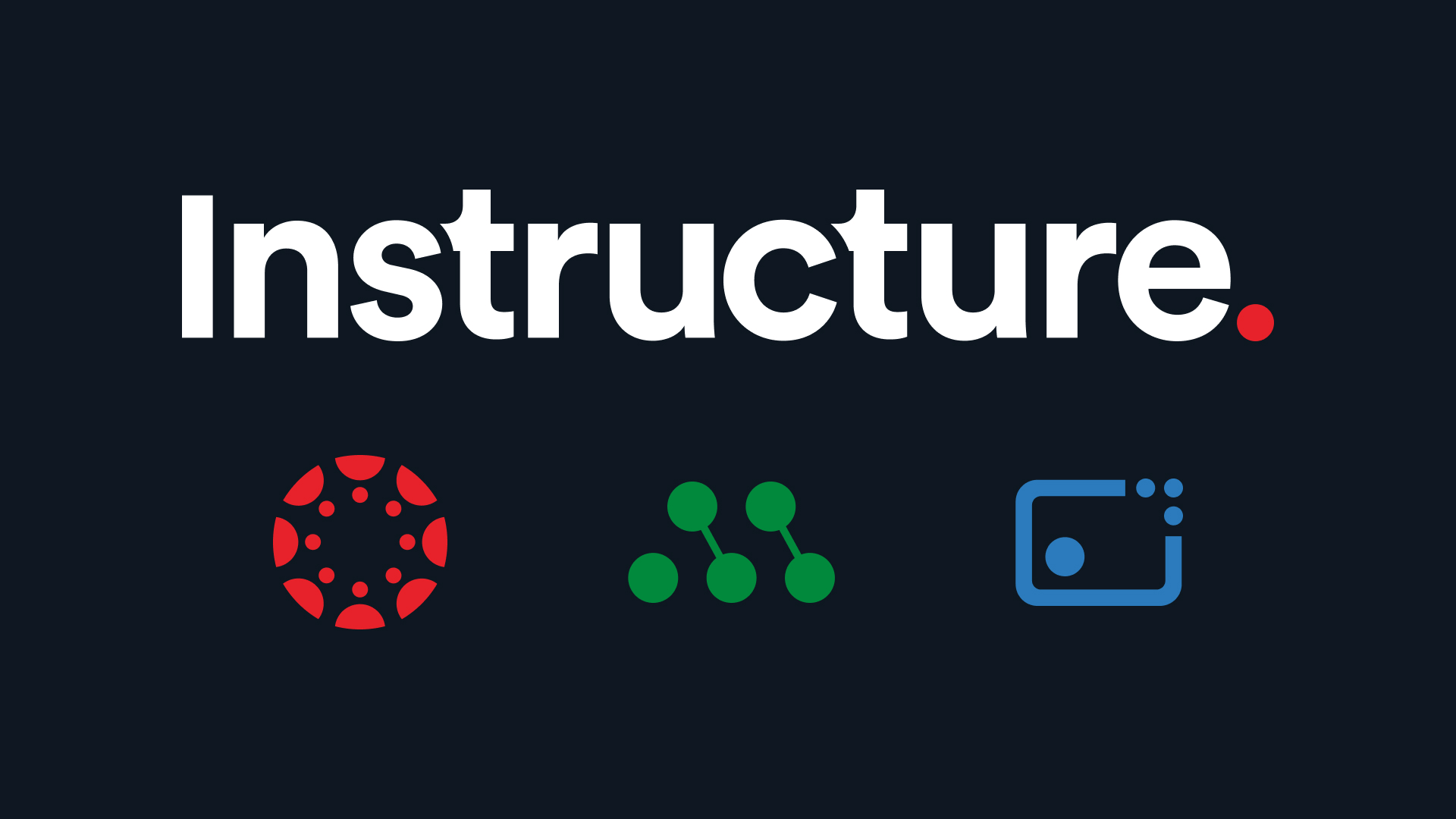Keeping students engaged with academic instruction and activity can be a challenging task for both higher education and K-12 educators. The changing academic landscape evolved how students interact and engage with learning, requiring educators to seek resources and strategies to best support today’s students. Educational technology is helping instructors rise to the occasion, becoming a prime resource in the classroom. Increased implementation of tech in learning environments has both supported and enhanced participation. Still, educators must consider each student's interests, prior knowledge, and learning goals to implement these edtech tools effectively.
With the use of a learning management system (LMS) and supporting digital tools, educators can easily engage diverse learners, monitor engagement, and measure progress. By promoting autonomy and enhancing instruction, these tools foster student engagement.
Before delving into technology’s effect on student participation, let's define student engagement and the strategies that support it.
Defining Student Engagement
Student engagement is a student’s participation and investment in their learning. To further understand, let’s review the pillars of student engagement:
- Behavioral engagement- Students are actively and physically engaged.
This is demonstrated by the learner being present, participating, and working on the task at hand. - Cognitive engagement- Students process the learning material and try understanding new concepts. A student asking questions in class is a great example of this.
- Emotional engagement—Students can express different feelings about a class or assignment. Some are excited about an activity, while others are apathetic to the task.
See how various strategies boost engagement for all learners and learning modalities.
Strategies to Increase Student Engagement
To understand the effects engagement has on student success, educators need to focus on the student experience as a whole. Educators, instructional designers, and institutions all play a part in providing the materials and tools needed for meaningful student participation. On the instructional level, certain strategies can foster engagement; let’s take a look.
Set clear expectations: For students to engage confidently with learning, they need clear expectations. Learning objectives set an intention, providing students with a goal or target. With competency-based education, students engage and build skills at their own pace. They meet their learning targets and demonstrate mastery before moving on in their journey.
Keep lines of communication open: Both students and teachers need to be able to communicate needs and expectations. Frequent and intentional communication keeps both parties in the loop and well-informed day-to-day. Receiving course updates, performance feedback, and personalized assistance through messaging keeps students motivated and engaged throughout their learning journey.
Encourage collaboration and connection: Lack of engagement can stem from alienation or a student not feeling connected to the academic community. Create opportunities for students to work together, transferring knowledge and shared interests with their peers. Use projects to increase active learning and build community in the learning space. Paired and group projects allow students to collaborate and foster a connection with their peers as they engage with their studies.
Provide choice and options: More and more students want autonomy and a sense of ownership in their learning. Giving students a choice in how they learn motivates them to make the best decision for themselves and their academic careers. To help personalize the learning experience, educators give assignment options, allowing students to choose how they would like to present their learnings. For example, an educator can assign a project, but students can decide if they want to present through a slide presentation, video, or poster board.
Create innovative learning experiences: Boredom and lack of interest can contribute to low engagement. Look for opportunities to bring life and excitement into the classroom. Use digital tools to integrate videos and media into class instruction. Or gamify instructional lessons. Both are great examples of enhancing the learning experience. The goal is to bring innovation into the learning space.
Consider accessibility a priority: For many students, their engagement is affected by situations beyond their control. That’s why educators and institutions must provide a way for every student to access their education. Regardless of a student’s ability, sight, hearing, or way of processing information, they should be equipped with the tools and materials they need to engage.
Meaningful and Engaging Instruction in K-12
“Student engagement is (still) the #1 measure of success.” - The State of Teaching and Learning in K- 12 Education
As our society evolves, student perspectives and interests change. As a result, teachers are learning what interests drive their students and creating authentic learning experiences. For example, Chris Lehmann, a principal at Science Leadership Academy(SLA), observed a group of students' attentiveness and excitement for their documentary film project.* He recalls how the students engaged in active learning as they pitched ideas, held group discussions, and researched their topics. Other educators use additional digital tools such as Nearpod to gamify learning material. Explore more practices and learning strategies educators are using to keep students engaged.
In addition to implementing technology in the classroom, teachers are employing effective instructional strategies to keep learners attentive. Personalizing instruction with differentiation tailors the learning experience for each student. With differentiated instruction, students receive an adaptable and equitable learning experience, facilitating their ability to engage.
Another substantial factor to consider is family involvement. Families and guardians have a considerable impact on students’ lives and academic performance. Encouraging family involvement establishes a community in the classroom and builds a solid support system for the student. Students can confidently engage in their learning, knowing that they have adults in their lives backing them.
*Learn more about Science Leadership Academy and how other K-12 schools increase engagement in our ebook: Through the Eyes of Educators: Insights into Student Engagement.
Providing Flexible, Skill-Based Learning To Engage Higher-Ed Learners
“Two-thirds of students and faculty would like to take or teach an online or hybrid class.” - 2022 State Of Student Success & Engagement in Higher Education
With adult learners having other commitments, such as work and growing families, institutions are providing flexible and accessible learning opportunities. Tech-enhanced instructional models, such as hyflex learning and other learning modalities, engage learners from anywhere, giving students a choice in how they consume their learning material. As institutions continue to expand online offerings, more students can access educational resources.
Consumerism in education continues to evolve, influencing a shift into student-centric practices and human-design ideology. Institutions prioritize immersive, equitable, and profitable learning environments to attract and support learners.
Skill-based learning and career-readiness is another key indicator of value in higher education. Students are looking for a strong start in their careers or opportunities for advancement. The CBE learning model supports skill-building as students learn at their pace and develop mastery of their desired set of competencies.
Offering flexible, tech-enhanced, and competency-based learning not only strengthens but engages the higher-ed community.
Immersive and Tech-Enhanced Learning With an LMS
“Student success today requires the availability of technology resources, as well as engaging content and instruction from technology-proficient faculty.” - 2022 State Of Student Success & Engagement in Higher Education
No longer just a simple addition but instead a necessary part of the learning ecosystem, learning management systems continue to foster student engagement. Canvas LMS enhances instruction for all learning modalities. With its ability to expedite communication, simplify personalized learning, and support learning from anywhere, Canvas LMS boosts overall engagement. Students are provided everything they need to succeed, including additional digital tools and integration capabilities that complement the tech-enhanced learning experience.
Educators can rely on these technologies to not only manage but to innovate, forging immersive experiences. See how you can leverage an LMS for student engagement. Today’s students are motivated to learn in stimulating tech-enhanced academic environments. Appeal to the modern student by pairing intuitive digital tools with intentional instruction.
Measuring the Impact Tech Has on Student Engagement
Institutions and schools want to know if technology is actually improving engagement and student success. Canvas Admin Analytics and Impact can provide that answer. With Admin Analytics, you can make data-informed decisions and see how students are progressing in their studies. By using Impact with Instructure, technology’s impact and effectiveness are evaluated. Insights are provided on Canvas tool usage and interaction, highlighting areas where features are supportive or areas that need more nurturing. This tool offers usage data, targeting student-specific needs and prompting educators to provide differentiated support. Learn more about Impact and how to adopt and navigate tools effectively.
How Other Institutions Are Fostering Engagement
Both higher education and K-12 institutions prioritize best practices to keep their students engaged. See how one school district fostered engagement and community in their schools. And take a deeper look at how an institution can use Impact insights to increase student engagement.
Related Content
 inst-3step.jpg
inst-3step.jpgBlogs

Blogs
 digging_deep_into_2025s_learning_trends_the_state_of_higher_education_in_anz_-_thumbnail_1.png
digging_deep_into_2025s_learning_trends_the_state_of_higher_education_in_anz_-_thumbnail_1.pngBlogs

